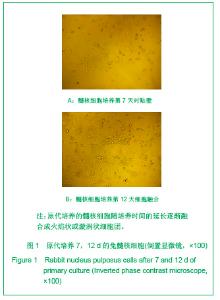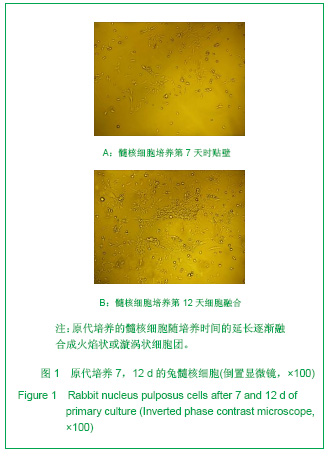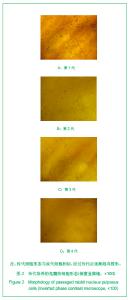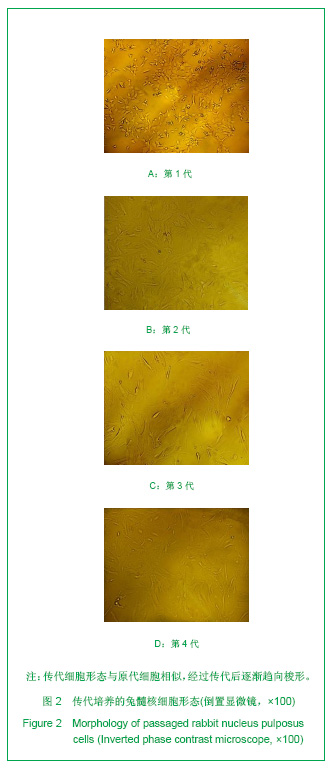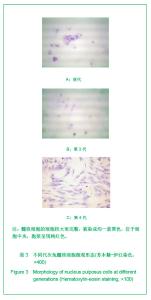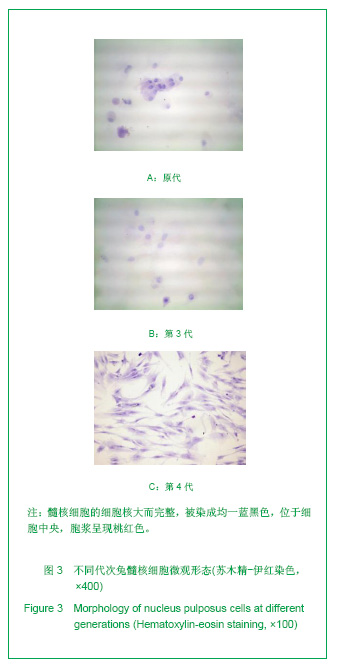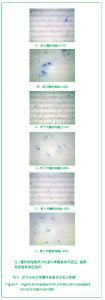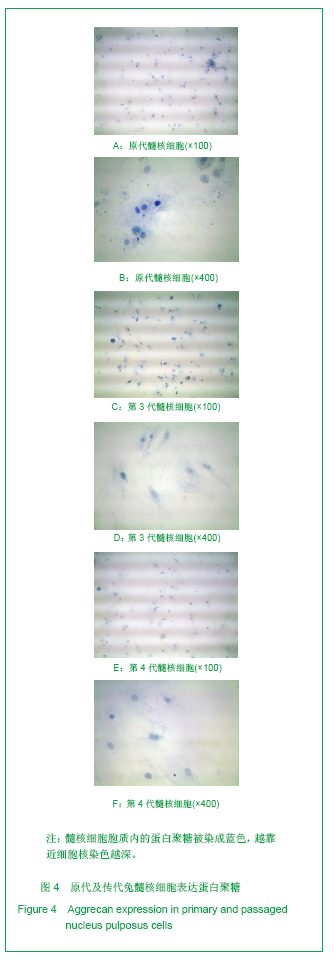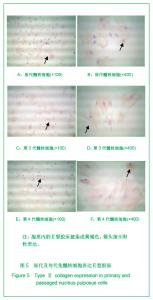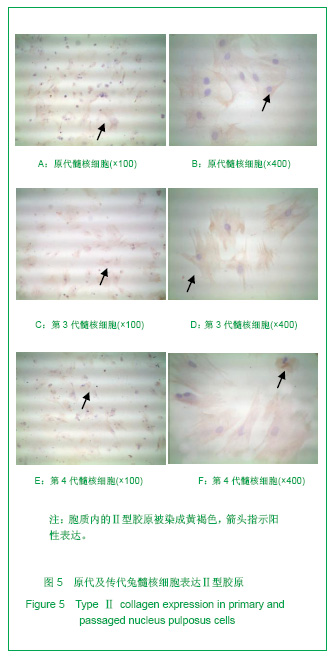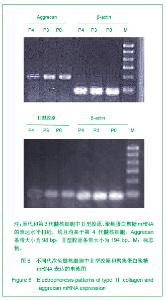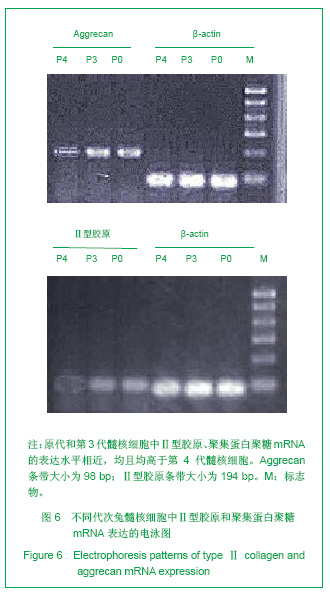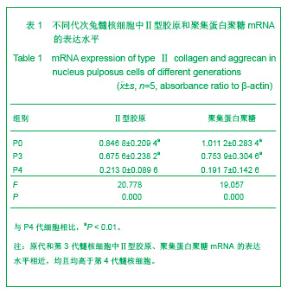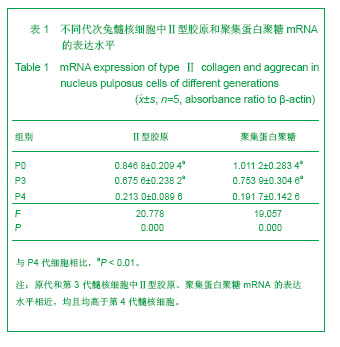Chinese Journal of Tissue Engineering Research ›› 2013, Vol. 17 ›› Issue (11): 1901-1908.doi: 10.3969/j.issn.2095-4344.2013.11.001
Different generations of rabbit nucleus pulposus cells: Morphological and biological properties
Wu Hai-jun, Yin He-ping, Li Shu-wen, Bai Ming, Du Zhi-cai, Cao Zhen-hua
- Wu Hai-jun, Yin He-ping, Li Shu-wen, Bai Ming, Du Zhi-cai, Cao Zhen-hua
-
Received:2012-12-10Revised:2012-12-26Online:2013-03-12Published:2013-03-12 -
Contact:Yin He-ping, Master, Professor, Chief physician, Master’s supervisor, the Second Affiliated Hospital of Inner Mongolia Medical University, Hohhot 010030, Inner Mongolia Autonomous Region, China nmgyhp0471@126.com -
About author:Wu Hai-jun★, Studying for master’s degree, the Second Affiliated Hospital of Inner Mongolia Medical University, Hohhot 010030, Inner Mongolia Autonomous Region, China 358280432@qq.com
CLC Number:
Cite this article
Wu Hai-jun, Yin He-ping, Li Shu-wen, Bai Ming, Du Zhi-cai, Cao Zhen-hua. Different generations of rabbit nucleus pulposus cells: Morphological and biological properties[J]. Chinese Journal of Tissue Engineering Research, 2013, 17(11): 1901-1908.
share this article
| [1] Pye SR, Reid DM, Smith R, et al. Radiographic features of lumbar disc degeneration and self-reported back pain. J Rheumatol. 2004;31(4):753-758.[2] Hadjipavlou AG, Tzermiadianos MN, Bogduk N, et al. The pathophysiology of disc degeneration: a critical review. J Bone Joint Surg Br. 2008;90(10):1261-1270. [3] Anderson DG, Risbud MV, Shapiro IM, et al. Cell-based therapy for disc repair. Spine J. 2005;5(6 Suppl):297S-303S.[4] Nerurkar NL, Elliott DM, Mauck RL. Mechanical design criteria for intervertebral disc tissue engineering. J Biomech. 2010;43(6):1017-1030. [5] Tsai TT, Guttapalli A, Oguz E, et al. Fibroblast growth factor-2 maintains the differentiation potential of nucleus pulposus cells in vitro: implications for cell-based transplantation therapy. Spine (Phila Pa 1976). 2007;32(5):495-502.[6] Sun HL, Li CD. Zhongguo Zuzhi Gongcheng Yanjiu yu Linchuang Kangfu. 2011;15(46):8569-8573. 孙浩林,李淳德.原代培养差速贴壁法分离纯化大鼠腰椎间盘髓核细胞[J].中国组织工程研究与临床康复,2011,15(46): 8569-8573.[7] Wang F, Wu XT, Wang YT, et al. Zhongguo Jizhu Jisui Zazhi. 2010;20(4):300-304. 王锋,吴小涛,王运涛,等.单纯Ⅱ型胶原酶消化法分离、培养人退变椎间盘髓核细胞的形态学观察[J].中国脊柱脊髓杂志,2010, 20(4): 300-304.[8] The Ministry of Science and Technology of the People’s Republic of China. Guidance Suggestions for the Care and Use of Laboratory Animals. 2006-09-30. 中华人民共和国科学技术部. 关于善待实验动物的指导性意见. 2006-09-30.[9] Livshits G, Popham M, Malkin I, et al. Lumbar disc degeneration and genetic factors are the main risk factors for low back pain in women: the UK Twin Spine Study. Ann Rheum Dis. 2011;70(10):1740-1745. [10] Zhang RF, Ruan DK, Zhang C, et al. Jizhu Waike Zazhi. 2008; 3(6):137-140. 张荣峰,阮狄克,张超,等.不同代次成人正常髓核细胞的形态及生长动力学比较[J].脊柱外科杂志,2008,3(6):137-140.[11] Kepler CK, Anderson DG, Tannoury C, et al. Intervertebral disk degeneration and emerging biologic treatments. J Am Acad Orthop Surg. 2011;19(9):543-553.[12] Kluba T, Niemeyer T, Gaissmaier C, et al. Human anulus fibrosis and nucleus pulposus cells of the intervertebral disc: effect of degeneration and culture system on cell phenotype. Spine (Phila Pa 1976). 2005;30(24):2743-2748.[13] Hu MH, Hung LW, Yang SH, et al. Lovastatin promotes redifferentiation of human nucleus pulposus cells during expansion in monolayer culture. Artif Organs. 2011;35(4): 411-416. [14] Ciapetti G, Granchi D, Devescovi V, et al. Ex vivo observation of human intervertebral disc tissue and cells isolated from degenerated intervertebral discs. Eur Spine J. 2012;21 Suppl 1:S10-19. [15] Gruber HE, Hoelscher GL, Ingram JA, et al. Senescent vs. non-senescent cells in the human annulus in vivo: cell harvest with laser capture microdissection and gene expression studies with microarray analysis. BMC Biotechnol. 2010;10:5. [16] Sakai D. Future perspectives of cell-based therapy for intervertebral disc disease. Eur Spine J. 2008;17 Suppl 4: 452-458. [17] Alini M, Eisenstein SM, Ito K, et al. Are animal models useful for studying human disc disorders/degeneration? Eur Spine J. 2008;17(1):2-19. [18] Yang Z, Huang CY, Candiotti KA, et al. Sox-9 facilitates differentiation of adipose tissue-derived stem cells into a chondrocyte-like phenotype in vitro. J Orthop Res. 2011; 29(8): 1291-1297. [19] Zhao CQ, Wang LM, Jiang LS, et al. The cell biology of intervertebral disc aging and degeneration. Ageing Res Rev. 2007;6(3):247-261. [20] Ma K, Hu YG, Qi ZH. Zhongguo Zuzhi Gongcheng Yanjiu yu Linchuang Kangfu. 2009;13(2):229-232. 马可,胡有谷,齐宗华.退行性变椎间盘的细胞培养[J].中国组织工程研究与临床康复,2009,13(2):229-232. |
| [1] | Liu Zhichao, Zhang Fan, Sun Qi, Kang Xiaole, Yuan Qiaomei, Liu Genzhe, Chen Jiang. Morphology and activity of human nucleus pulposus cells under different hydrostatic pressures [J]. Chinese Journal of Tissue Engineering Research, 2021, 25(8): 1172-1176. |
| [2] | Wang Feng, Zhou Liyu, Saijilafu, Qi Shibin, Ma Yanxia, Wei Shanwen. CaMKII-Smad1 promotes axonal regeneration of peripheral nerves [J]. Chinese Journal of Tissue Engineering Research, 2021, 25(7): 1064-1068. |
| [3] | Fu Yuanfei, He Shenghua, Lai Juyi, Sun Zhitao, Feng Hualong, Lan Zhiming . Pheretima extract ameliorates nucleus pulposus cell degeneration in the intervertebral disc by inhibiting nuclear factor-kappa B pathway [J]. Chinese Journal of Tissue Engineering Research, 2021, 25(2): 264-268. |
| [4] | Zhang Kai, Zhang Xiaobo, Shi Jintao, Wang Keping, Zhou Haiyu. Mesenchymal stem cells for treatment of intervertebral disc degeneration: a bibliometric and visualization analysis based on Web of Science database [J]. Chinese Journal of Tissue Engineering Research, 2021, 25(19): 3031-3038. |
| [5] | Yang Fan, Liu Baoyi, Liu Jiahe, Yang Jiahui, Qin Kairong, Zhao Dewei. Morphological characteristics of in vitro cultured articular chondrocytes from Sprague-Dawley rats at passage number from 0 to 3 [J]. Chinese Journal of Tissue Engineering Research, 2021, 25(14): 2161-2165. |
| [6] | He Shenghua, Fu Yuanfei, Lan Zhiming, Sun Zhitao, Lai Juyi, Feng Hualong, Guo Zibin, Li Gai . Yaotu Granule deals with the proliferation and apoptosis of nucleus pulposus cells via regulating the expression of microRNA-221 [J]. Chinese Journal of Tissue Engineering Research, 2021, 25(14): 2177-2182. |
| [7] | Yan Nan, Si Xiaofeng, Zeng Liang, Tian Wei, Shan Guangdong, Xiong Lishuo, Yang Weijie, Wang Zhengdong. Nerve growth factor interferes with proliferation and alpha-actin expression of skeletal muscle satellite cells in rats [J]. Chinese Journal of Tissue Engineering Research, 2021, 25(13): 2030-2035. |
| [8] | Liu Zhigang, Guo Qinggong, Chen Jingtao. Effect of Capparis spinosa total alkaloid on proliferation and apoptosis of nucleus pulposus cells in an intervertebral disc degeneration rat model [J]. Chinese Journal of Tissue Engineering Research, 2021, 25(11): 1699-1704. |
| [9] | Xu Guofeng, Li Xuebin, Tang Yifan, Zhao Yin, Zhou Shengyuan, Chen Xiongsheng, Jia Lianshun. The role of autophagy in ossification of the human ligamentum flavum [J]. Chinese Journal of Tissue Engineering Research, 2020, 24(8): 1174-1181. |
| [10] | Chen Jiang, Xiao Huideng, Sun Qi, Zhang Fan, Zhu Yonggang, Liu Zhichao, Guo Feiyu, Liu Genzhe. Proliferative activity of nucleus pulposus cells in human intervertebral disc and intervention with Yishen Huoxue Tongluo Recipe [J]. Chinese Journal of Tissue Engineering Research, 2020, 24(8): 1200-1206. |
| [11] | Yang Jinfeng, Ma Sanhui. Association of HTRA1 and HAPLN1 gene polymorphism with intervertebral disc degeneration [J]. Chinese Journal of Tissue Engineering Research, 2020, 24(32): 5128-5132. |
| [12] | Chen Peishan, Zhang Haiyan. Organs-on-a-chip and engineered human tissues in drug development [J]. Chinese Journal of Tissue Engineering Research, 2020, 24(29): 4717-4723. |
| [13] | Wang Yu, Lei Jianyin, Xin Hao, Luo Lin, Li Zhiqiang. Finite element analysis of cervical spine (C2-C7) with degenerated disc under normal loading and massage [J]. Chinese Journal of Tissue Engineering Research, 2020, 24(27): 4278-4284. |
| [14] | Yin Xunlu, Zhu Liguo, Feng Minshan, Yu Jie, Zhan Jiawen, Liang Long, Han Tao. Effect of continuous loading pressure on apoptosis and Wnt/beta-catenin signaling pathway in nucleus pulposus cells [J]. Chinese Journal of Tissue Engineering Research, 2020, 24(26): 4125-4128. |
| [15] | Yuan Tao, Jiang Hui, Lai Zhendeng, Qian Hong, Yang Shaoqiang, Feng Zhangqi, Zhao Jianning, Bao Nirong. A novel hydroxyapatite fiber scaffold for three-dimensional cell culture [J]. Chinese Journal of Tissue Engineering Research, 2020, 24(22): 3491-3497. |
| Viewed | ||||||
|
Full text |
|
|||||
|
Abstract |
|
|||||
